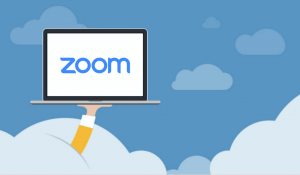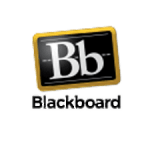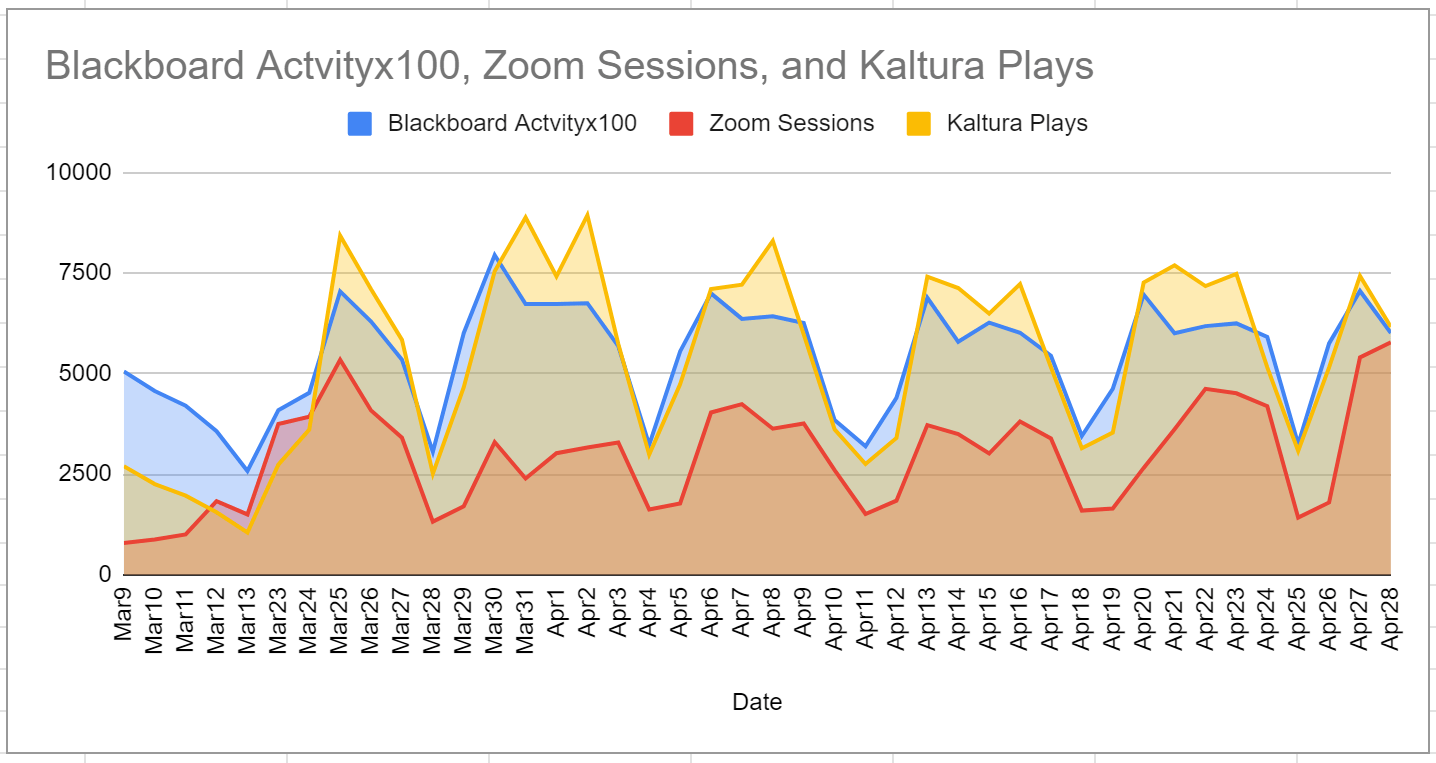US:IT RESPONDS TO COVID-19
![]()
PAGE CONTENT
- IT Support Services Puts Clients First
- Web Technologies Communication Efforts
- Networkmaine VPN and K-12 WIFI Efforts
- End User Technology RemoteLab Access
- Remote Learning and Teaching with Blackboard, Zoom and Kaltura
IT Support Services Puts Clients First

IT Support Services (ITSS) created a COVID-19 Contingency Team to work on unifying IT support services to support anyone from anywhere. ITSS unified its scheduling, support hours, and roles to ensure that IT support continued under reduced staffing, loss of most student workers, and the move to remote work. Faced with help desk phone system challenges, ITSS quickly launched the new live chat support tool and continues to take client requests through email to help@maine.edu and voicemails left on our help desk phone 800-696-HELP. ITSS is regularly updating the IT Support Site including new content to help clients with changes. Support services staff and managers continue to meet regularly to coordinate activities. We want to thank all those IT support staff who contributed to this extraordinary effort to support our teaching, learning and working, and to help keep our clients safe with remote support during the COVID-19 response.
Web Technologies Communication Efforts

The Web Technology team (Web Tech) was called upon to help stand up the Health Advisory site. The site was initially developed to be a simple, one page subsite for COVID-19 health advisories and guidance links to resources. As the need for development quickly escalated, considerable collaboration occurred between campuses and system-wide services departments. Banners were added to extend to all campus websites and portals. New subsections, ease-of-use functionality, and banner time stamps were added. During this time, Web Tech also completed the design of the Presidential Tour Site at values.maine.edu and began developing a new subsite, servingu.maine.edu, to demonstrate UMS’s contributions to the State of Maine’s effort to combat COVID-19. Web Tech also assisted with the IT Help Desk roll out of Live Chat. Web Tech staff kept late hours during weekdays and weekends, as needed. Many thanks to the Web Tech team and all who supported their remarkable efforts.
Networkmaine VPN and Wi-Fi Efforts
![]()
Having a remote access VPN solution was determined to be a critical necessity for supporting COVID-19 work from home efforts. Planning discussions began on March 4th and progressed very quickly. An easy to use and scalable solution that also did not create a huge support lift for help desk and support services staff would be required to make it happen. New licenses were acquired by March 12th, internal testing was completed by March 14th and an announcement of availability was made on March 19th. It took only ten days to set it up! There are currently 1,750 device profiles created with over 1,460 unique users. Peak usage hits about 500 concurrent clients daily, which is roughly a 24% utilization level. As of today, there have been no problems and the system is performing as expected. A support dashboard has also been created to help the teams taking support calls/emails/chats. Very few tickets have needed to be escalated indicating that the remote access VPN service has delivered on all the identified requirements. Thank-you NetworkMaine and to the groups and teams who participated in this important work.
For students of all ages and grade levels, K-20, moving to remote learning can pose significant challenges if they do not have not have internet access at home.The Maine Department of Education estimates some 30,000 K-12 students do not have internet access in their homes. In response, Networkmaine proposed a stop gap solution that has become to be known as the “study from car” initiative. 
Unlike the University, most K-12 schools do not have guest Wi-Fi networks. With Networkmaine operating the Wi-Fi networks for 136 K-12 schools across the state as part of the Maine Learning Technology Initiative (MLTI), it was in a position to offer to create guest Wi-Fi networks for these schools. The concept is that Wi-Fi signals often bleed outside of buildings which can be leveraged to provide internet access to anyone parked near the buildings thereby allowing them to participate in remote learning from their cars.
In addition, Networkmaine has reached out to all its members asking that they make guest Wi-Fi available outside of their buildings. To track participation and as a way to advertise the availability of these guest Wi-Fi networks, Networkmaine created a Google map of all participating locations. There are currently 205 locations across the state represented on the map. These locations include 111 K-12 schools, 24 higher education institutions, 66 libraries and 4 “other” locations. Thanks to all who contributed to and helped in coordinating this effort.
End User Technology RemoteLab Access

To support remote access to computer labs on campuses, End User Technology (EUT) made the determination to broker connections to lab machines and their special software. A decision was made on March 13th to find a product that would allow this access. A list of needed software was developed and product reviews took place. RemoteLab was selected as a workable option, and the service was put in place by March 27th. The software available through RemoteLab continues to be built upon. EUT had help from many teams during this collaborative process. Thank-you to all involved for your quick response in providing this solution.
Remote Teaching and Learning with Zoom, Kaltura and Blackboard

Zoom usage has increased significantly. Service has been stable overall as Zoom adds capacity daily to meet demand. Over the last week, there was a peak of over 5,000 meetings per day. Meeting minutes and participant numbers have also significantly increased. To support Zoom usage and in response to reported issues of Zoombombing and other security issues, US:IT is making continuous updates to its Zoom Resources & Support page.
Kaltura usage has also grown and US:IT has added capacity to assist with ![]() increased traffic. There have been some issues with slowness and availability, but no real problems overall. Spikes over the last few weeks have hit over 8,000 plays. Minutes viewed have also gone up.
increased traffic. There have been some issues with slowness and availability, but no real problems overall. Spikes over the last few weeks have hit over 8,000 plays. Minutes viewed have also gone up.
 Blackboard use has also increased with no reported service issues. Usage spikes reflect double the activity seen prior to spring break. Labster (virtual science laboratory simulation) and Respondus (remote proctor) were added for faculty use. Both of these software applications integrate with Blackboard.
Blackboard use has also increased with no reported service issues. Usage spikes reflect double the activity seen prior to spring break. Labster (virtual science laboratory simulation) and Respondus (remote proctor) were added for faculty use. Both of these software applications integrate with Blackboard.
Many thanks to all who provide much needed support and updates to documentation for Zoom, Kaltura and Blackboard.
